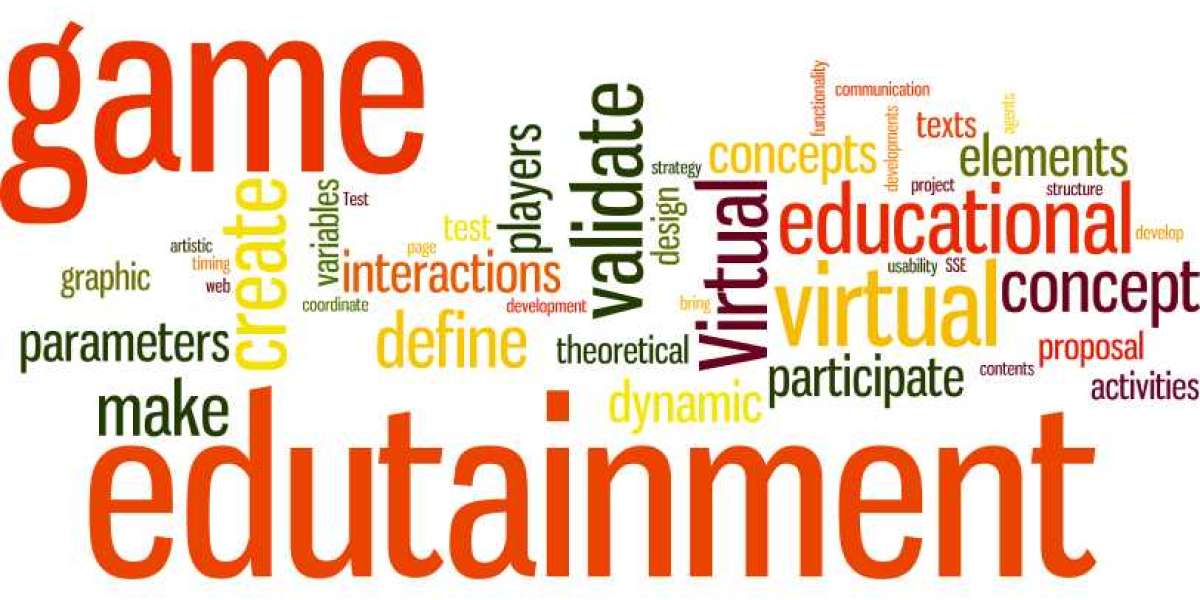Edutainment Market Outlook
The Edutainment Market size is experiencing a surge in growth as educational entertainment becomes increasingly integrated into everyday learning and recreational activities. Edutainment combines educational content with entertaining elements to engage audiences more effectively, making learning enjoyable and memorable. This market spans various platforms, including interactive exhibits, educational video games, and digital learning tools. With advancements in technology, the delivery of edutainment has evolved significantly, incorporating virtual reality (VR), augmented reality (AR), and artificial intelligence (AI) to create immersive learning experiences.
The demand for edutainment is driven by the need for innovative educational methods that cater to diverse learning styles and keep pace with technological advancements. As traditional education methods face criticism for being outdated and less engaging, edutainment offers a dynamic alternative that can captivate and educate simultaneously, appealing to both children and adults. This growing acceptance of edutainment reflects a broader trend towards experiential learning and interactive education.
Major Market Players
Prominent players in the edutainment market include companies such as Disney, Lego, and LeapFrog, which have long been pioneers in merging education with entertainment. Disney’s edutainment approach, seen in their educational TV programs and interactive learning apps, has set a high standard in the industry. Lego, with its educational kits and robotics, bridges the gap between play and learning, fostering creativity and problem-solving skills. LeapFrog’s educational tablets and learning games are designed specifically for children, offering tailored educational content that is both fun and instructional. Other significant contributors include MindWare, a leader in brainy toys and games, and Tynker, which focuses on coding education through interactive platforms.
These companies are continually innovating to stay ahead in a competitive market, leveraging new technologies and understanding consumer needs to create products that resonate with their target audience. The success of these market players highlights the potential and profitability of the edutainment sector.
Get a Sample PDF of the Report at:
https://www.marketresearchfuture.com/sample_request/8291
Market Segmentation
The edutainment market is segmented based on age group, application, and geography. Age group segmentation includes products designed for children, teenagers, and adults, each catering to the specific educational needs and interests of these demographics. Application-wise, the market is divided into interactive exhibitions, educational games, and digital content, among others. Interactive exhibitions, such as science museums and discovery centers, offer hands-on learning experiences. Educational games, both physical and digital, combine learning objectives with gameplay to enhance retention and engagement. Digital content includes online courses, apps, and e-books that provide flexible and accessible learning opportunities. Geographically, the market spans North America, Europe, Asia-Pacific, and other regions, with each showing varying levels of adoption and growth based on technological infrastructure and educational priorities. This segmentation allows for targeted marketing strategies and product development, ensuring that the diverse needs of different consumer groups are met effectively.
Top Impacting Factors
Several key factors influence the growth of the edutainment market. Firstly, the increasing adoption of technology in education is a major driver. As schools and educational institutions incorporate digital tools into their curricula, the demand for engaging, educational content rises. Secondly, the growing emphasis on STEM (Science, Technology, Engineering, and Mathematics) education encourages the use of interactive and practical learning methods, which edutainment effectively provides. Thirdly, parental preferences for educational toys and games that aid cognitive development in children boost market demand.
Additionally, the rising popularity of homeschooling and alternative education methods, which often rely on edutainment to maintain interest and enhance learning, further propels market growth. Finally, the development of innovative technologies like AR and VR, which offer immersive learning experiences, is expanding the capabilities and appeal of edutainment products. These factors collectively drive the market forward, making edutainment a significant and evolving segment of the education industry.
Latest Industry News
Recent developments in the edutainment market highlight the dynamic nature of this industry. Companies are increasingly leveraging advanced technologies to enhance their offerings. For instance, the integration of VR and AR in educational content is gaining traction, providing users with immersive and interactive learning experiences that were previously unimaginable. Collaborations between educational institutions and edutainment companies are becoming more common, aimed at creating tailored educational content that aligns with curriculum standards.
Additionally, the rise of mobile learning has led to a surge in the development of educational apps that are accessible on smartphones and tablets, making learning on the go a viable option. Another significant trend is the expansion of edutainment into emerging markets, where increasing internet penetration and smartphone usage create new opportunities for growth. Furthermore, the COVID-19 pandemic has accelerated the adoption of digital learning tools, with many parents and educators seeking engaging and effective alternatives to traditional classroom learning. These trends underscore the ongoing evolution and expansion of the edutainment market.
Browse In-depth Market Research Report:
https://www.marketresearchfuture.com/reports/edutainment-market-8291



![Background Check Market Size, Share | Global Report [2032]](https://cristianoronaldoclub.com/upload/photos/2024/09/nmQGqvRMaTz7IFLwnSa5_26_37463c7597b5b2bbf6067070d7c5477d_image.png)